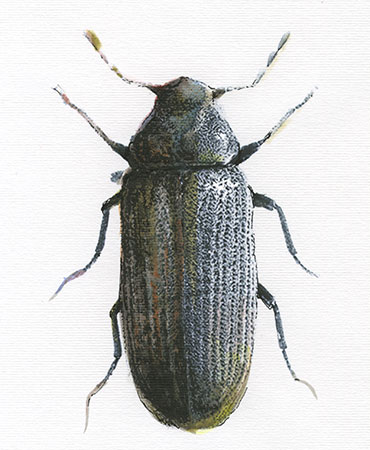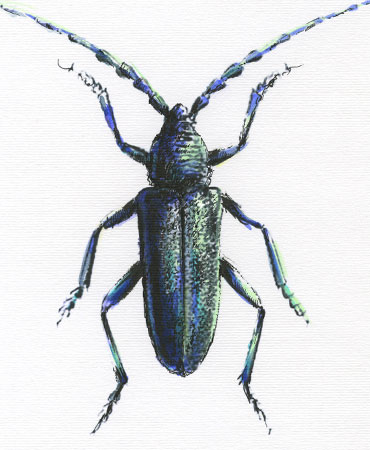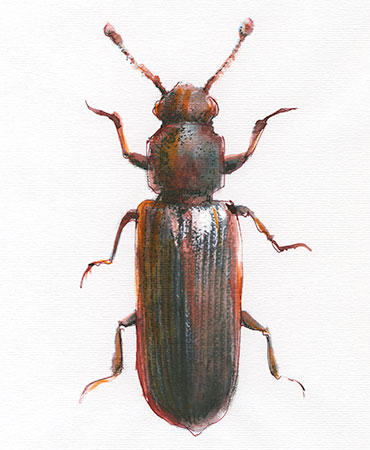A FEW NOTIONS REGARDING THREE OF THE MOST WIDESPREAD SPECIES OF WOOD BORERS:
ANOBIDS _
- They develop by feeding mostly on hard woods like walnut, mahogany, ebony but they also appreciate the soft woods of coniferous and deciduous trees. Normal life cycle: 1 year. This family can have up to 2 or 3 reproductive cycles in one year if the climate is humid-warm. A dry climate can be a hindrance to them, but it generally is not the case.
CERAMBYCIDS _
- They feed preferably on coniferous woods like: spruce, silver fir, pine, larch and in general soft woods. Infestations by this species are very dangerous because the first signs of damage are visible only after 2/3 years. The cycle varies from 2/3 years up to 10/12 years from the laying of the eggs to the boring of the hole through the wood. They tunnel between the bark and the sapwood. They can deposit up to 400 eggs in multiple times and in different places (3 or 4 egg masses).
LYCTIDS _
- They eat into woods from deciduous trees like: oak, ash, chestnut, walnut, locust and exotic woods. Normal life cycle: 1 year. They can have up to 2 to 3 reproductive cycles in one year if the climate is warm, regardless of humidity. They burrow tunnels along the wood fibres. The Lyctus lays 1 egg per vessel. The Lyctus Brunneus from 2 to 4 eggs per vessel. The dimensions vary from 2 to 7 mm.





